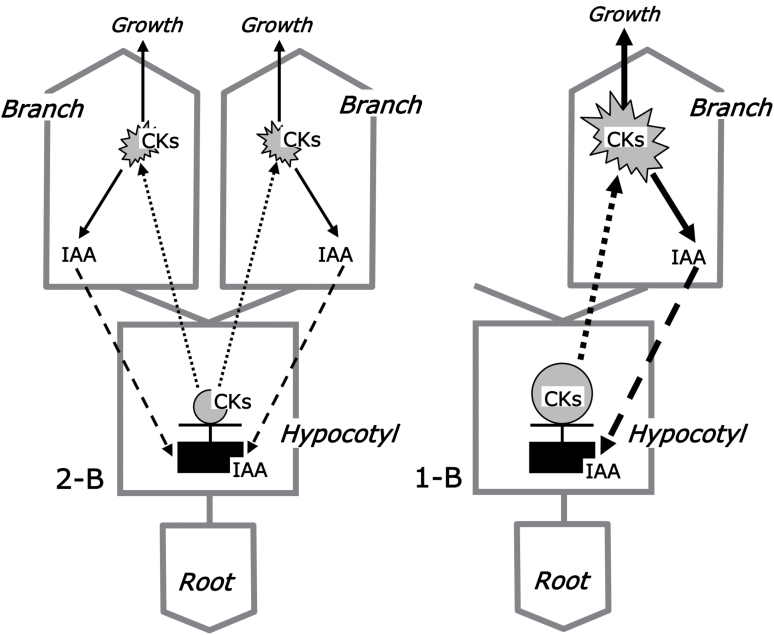Fig. 6.
Schematic representation of the IAA–CK balance in the model system of pea seedlings. Roots were shown not to be involved in the hormonal interactions (Fig. 2D, right side; Fig. 4A–C). The interaction between IAA and CKs occurs by transport of these hormones. Xylem CK (dotted lines) acts positively on the production/export of shoot auxin (dashed lines) (Fig. 3; Li and Bangerth, 1992, 2003), while IAA acts negatively on the synthesis/content of CKs in hypocotyl (0-B variant in Fig. 5; Li et al., 1995; Tanaka et al., 2006; Kotov and Kotova, 2015). Our data suppose that IAA homeostasis in the hypocotyl is key to the formation of the IAA–CK balance; a steady-state tissue IAA level is sustained near a threshold level, below which CK synthesis is switched on, activating the export of IAA from shoot(s) through ascending xylem flow of CKs. The removal of one shoot from 2-B plants results in an initial decrease of hypocotyl IAA content that triggers CK synthesis, which continues until the concentration of CKs in hypocotyl (Fig. 5) and, as a consequence, in xylem sap (Fig. 4A, C) becomes sufficient to increase IAA export from the remaining shoot (Fig. 2A, B, D). This compensates for the loss of a shoot, restoring the IAA concentration in the hypocotyl, and stopping further CK synthesis and elevation of xylem CK levels.

